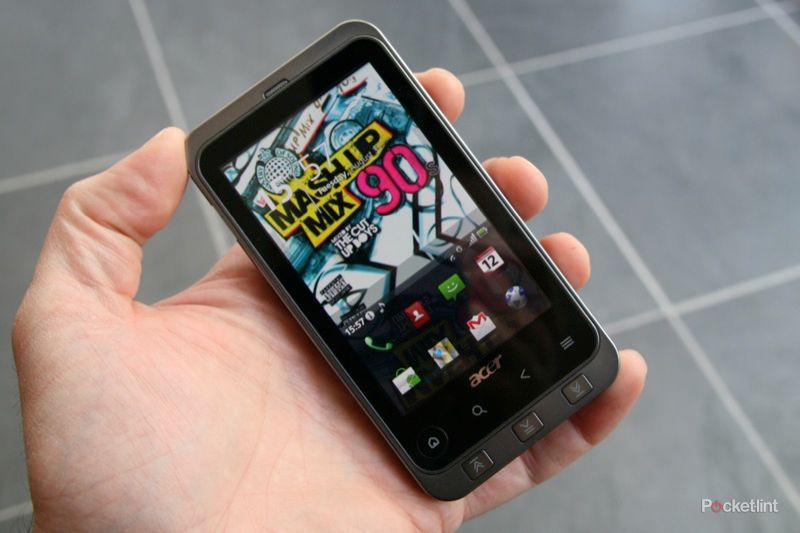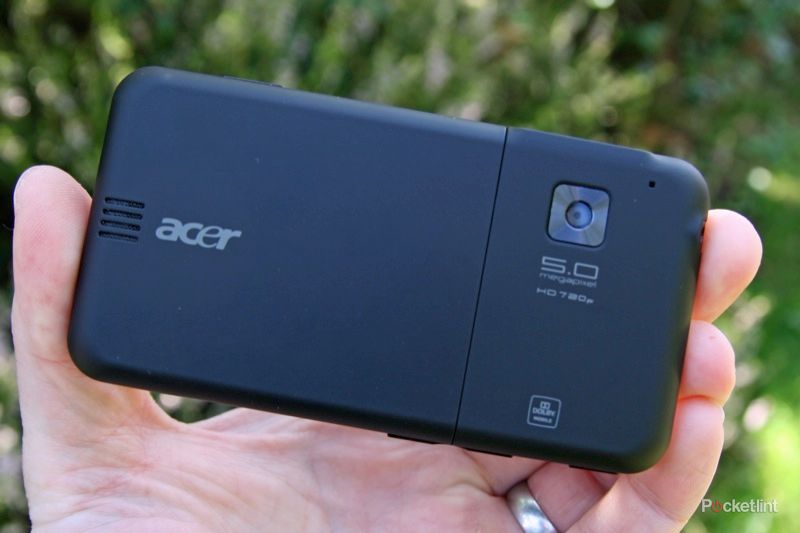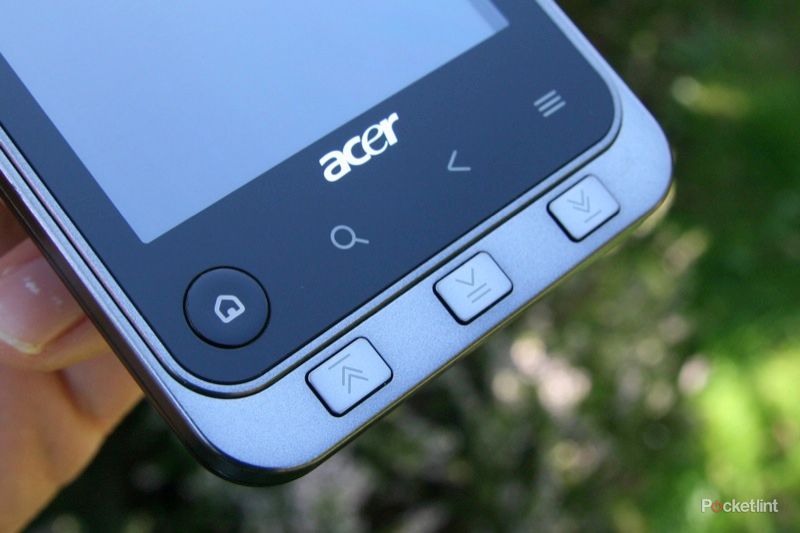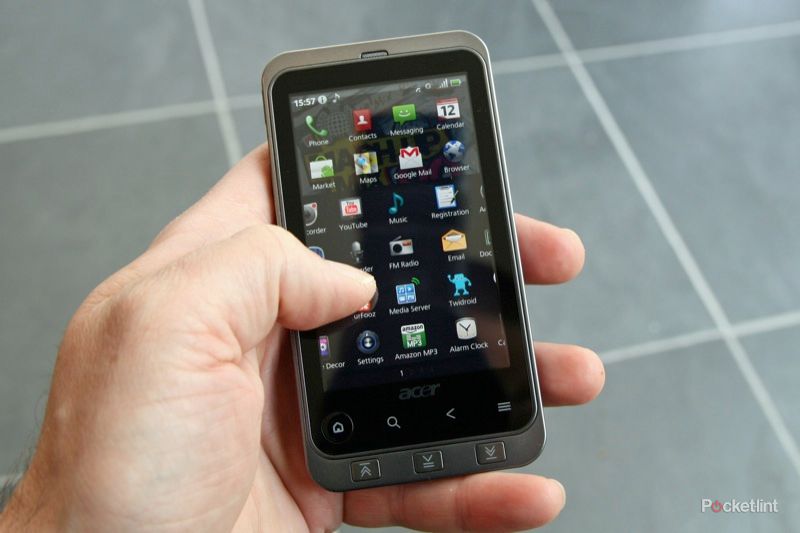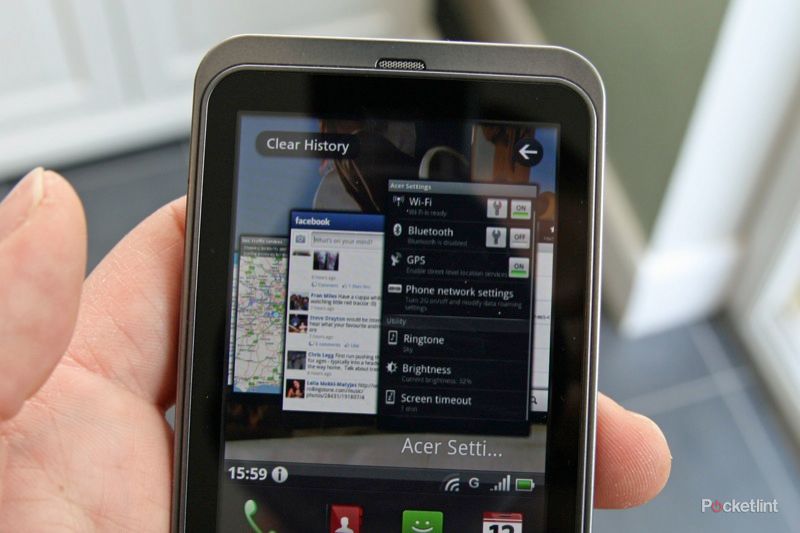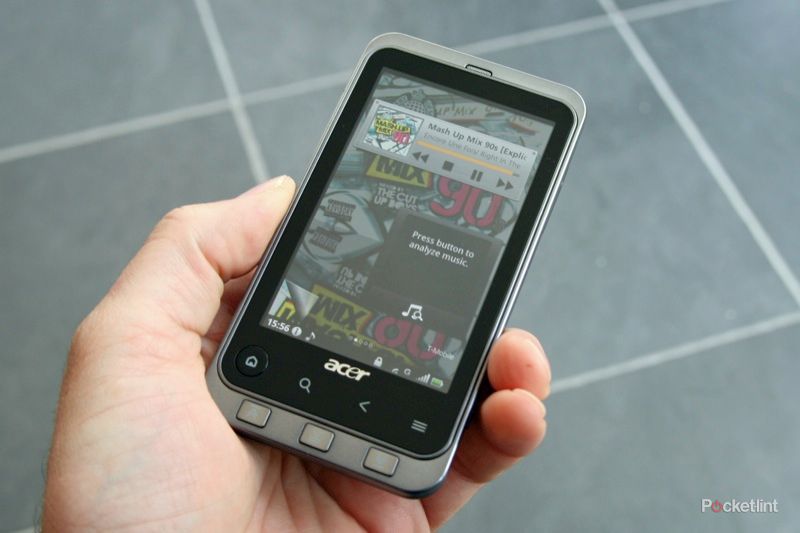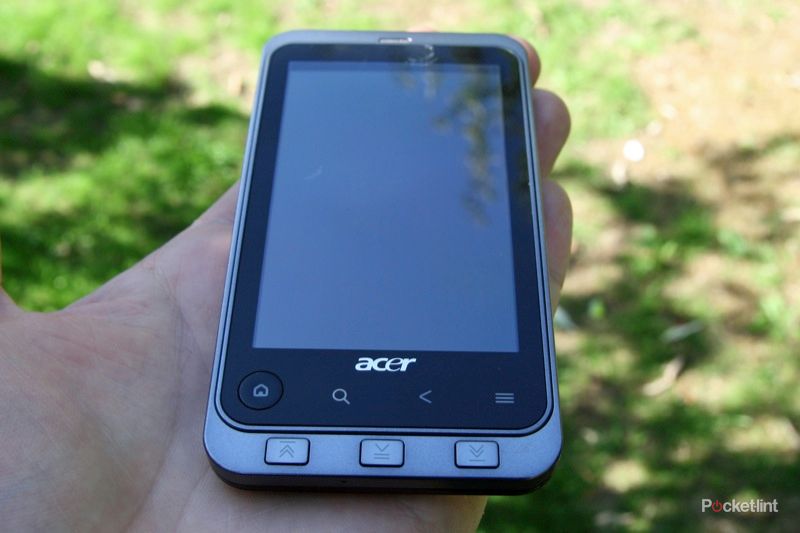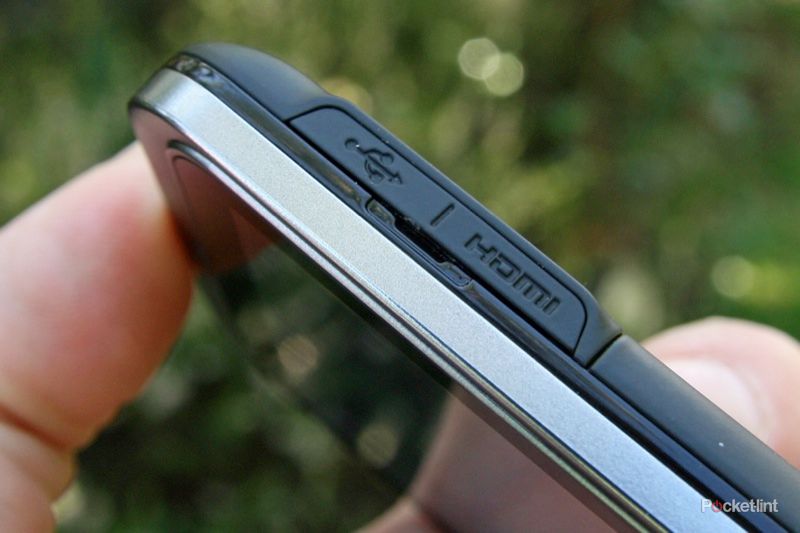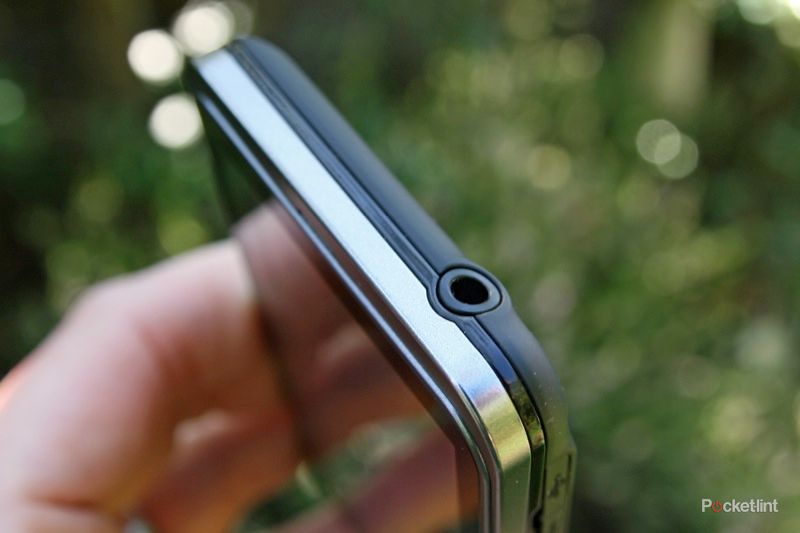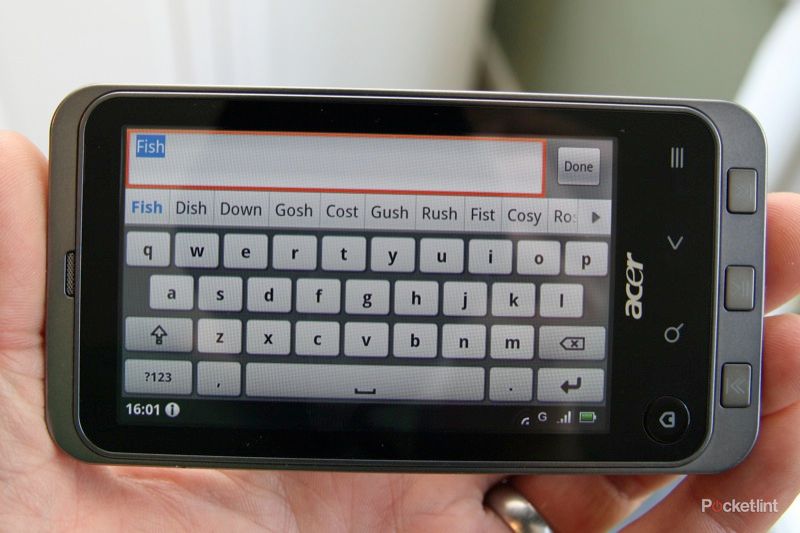The Acer Stream is the company's latest flagship handset, following on from the Liquid and Liquid E before it. Acer isn't a company with a great history in mobile devices and so far has enjoyed limited success. It's clear that Acer is committed to this agenda, but has it hit the right notes with the Stream?
Our quick take
Overall we found navigation to be fast, with little sign of lag anywhere in the device. Applications loaded with pace and executed their functions without problems. For all the changes that Acer has brought in, we found the Stream to run the UI without any problems. It also worked just the same when this UI was switched off. The keyboard was improved by turning off the haptic feedback on presses, which allowed a faster rate of text entry.
So what we have from Acer is something of a surprise. Their customisation adds some interesting ideas to the Android mix. There are nice elements we'd like to see in other devices, like the scrolling history and the active standby wallpaper, but there is a level of confusion here, with multiple routes and multiple players offering similar versions of the same thing from the get go.
The biggest failing we feel is in the design, which isn't ambitious enough from the outside and a little over-reaching in the custom UI. The three shortcut keys don't really give you much of a benefit in daily use - is it too much hassle to use the on-screen controls when watching video? The overall look doesn't shine like rivals and this could be easily corrected.
Whilst the Acer Stream doesn't quite reach the heights that other handsets have, Acer is starting to get close. We've found the Stream to be capable, if not as desirable as others, and we can't help feeling that with a little more work, Acer could start to attract a lot more interest.
The Acer Stream is available online, SIM free for £399.99.
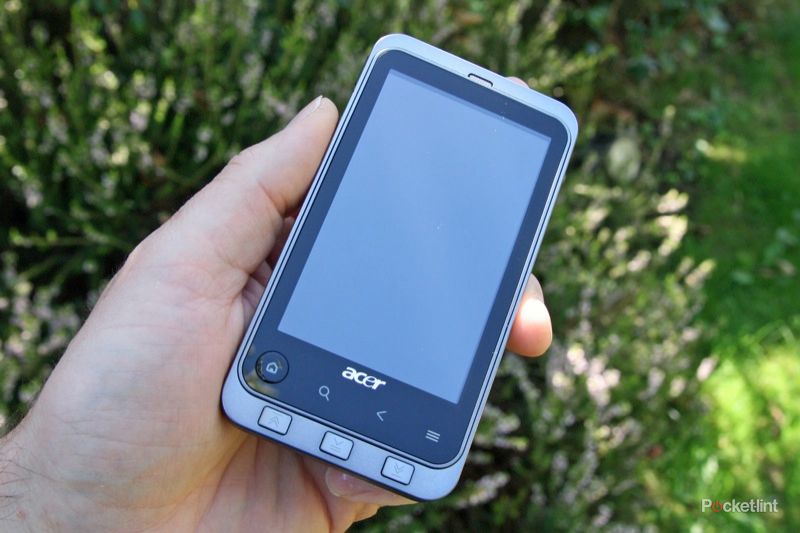
Acer Stream - 3.5 / 5
| FOR | AGAINST |
|---|---|
|
|
On paper the Stream looks impressive. A 3.7-inch 800 x 480 capacitive AMOLED display puts it in HTC Desire territory. The 5-megapixel autofocus camera, offering 720p video capture squares up against the Samsung Galaxy S. The micro HDMI out puts it in the game with the HTC Evo. But does it compete with these hero handsets?
We've seen how the Android battleground is drawn up. With most phones offering similar, if not the same, hardware components and the same core operating system, the difference between a good phone and a bad phone often comes down to two things - the design and what the company does to it, which govern the user experience.
Okay, it isn't quite that simple. The screen makes a big difference when the touch response isn't right, but often that is not the fault of the hardware - especially when it comes to a capacitive touchscreen AMOLED display, but how the manufacturer presents the operating system beneath it.
Starting with the design, Acer doesn't do itself any favours. There is a hint of the beTouch range around the back, with a matte black cover shaped as though it has come off the same design line. It's a simple clip on affair and whilst this doesn't make it a bad phone, it doesn't have the impact in the hand that the glorious unibody design of the HTC Desire has, or the premium materials of the iPhone 4.
Around the front there is just a little too much bordering on that display. It feels like the prize asset is hidden away, with the design bringing in a screen frame, that again sits in the body of the phone. It feels a little chunky, lacking consumer refinement and wow factor in the hand. It doesn’t exhibit the clean and sophisticated lines you want from your daily handset.
The buttons too, raise an eyebrow. The side volume, camera and lock/power buttons seem a little too thin to be comfortable to use, but are functional enough. Other controls join the fray, with the regular assembly of touch controls across the bottom of the display (search, back, menu), with the home button in line being a proper hard button.
Beneath this there are further buttons which outline what Acer thinks this phone should be and they are play/pause and forward and back controls for watching video. We say watching video, because we found that was all they controlled - not music as well - which was a bit of a surprise. More interestingly pressing one of these shortcut buttons whilst in the music player would see it exit and return to the home screen.
Power the phone on and you are greeted with Acer's custom user interface, sitting on the top of Android 2.1. This adaption of Android goes further than Acer has gone before. We previously saw a 3-page side-swiping home screen with a couple of widgets, but this version (Acer UI 4.0) takes things to a whole new level.
In doing so it makes quite a departure from conventional Android norms. You lose the top drag-down status bar for example, which means that is isn't as familiar as you might want it to be. We like that fact that Android offers such versatility, be we are also from the school of thought that says if something works, stick with it.
The Acer interface instead splits the screen, with the bottom of the screen showing you the top eight application icons from your menu. To customise which icons are seen, you simply have to rearrange your menu to get your important apps to the top - rather like the BlackBerry UI. You can drag the whole lot up to access the rest of the menu, which then preserves your "top eight" and scrolls the rest of the menu left and right beneath this to get to your other apps. It means that you can always access your favourites.
The status bar, then, finds itself nestling across the top of these icons. Tapping it will pop-up another menu system centred on your alerts (emails, missed calls, downloaded apps, etc). This menu again swipes left and right to access other object on the status bar - the clock and alarms - as well as all your connectivity options and battery status, and additions such as music when the music player is running. Why Acer couldn't have integrated the same system at the top of the page we don't know.
But that's not all it offers. Swipe left from the main page and you'll enter the history of your device. This lets you swipe from page to page, so if you were doing something and want to return to, you'll find it logged here - be it Facebook, emails, fiddling with the settings or whatever. It's a nice touch and as a widget, something we can see coming in handy on devices where you have multiple home pages begging to be filled.
Swipe to the right and you'll enter the media area. Remembering that the Stream is pitched as a media handset this is a key area to the phone's lofty aims. We find it harbouring a similar media widget to the Acer Liquid, offering photos, music and videos that you can thumb through, and tap to enter the respective media browser. It works well enough, but if you have a lot of content it can be a little unyielding.
The downside of what seems like a considered offering is that you get no customisation options of your own. You can't deploy extra widgets or drop shortcuts to files, people or anything else - not in the usual Android sense. The customisation options will let you remove the media browser or history, but not replace it with anything else - you just lose the page. Basically you are stuck with what Acer thinks is the best approach.
That is until you find the Widgets app hiding in the menu which effectively opens up a widget layer, into which you can dump all your useful widgets. This you could put in the top layer of your menu for one-touch access to all your widgets, but once running, it also takes over your standby screen. This is a smart implementation by Acer, as not only do you get your music controls, but you can also flash a glance at your agenda, the weather, or any other widgets you have running. You can't drop application shortcuts, but it is a pretty neat solution, as is the peel-back unlock, which reminds us, once again, of the Samsung unlock screen.
If you find the Acer UI really offensive, you can return to what the phone calls "Android UI" which is essentially the same as we saw on the Liquid, with a more conventional arrangement of customisable pages and widgets. Ultimately this view offers you greater freedom, but you lose some of the hard work that Acer put in elsewhere, so there isn't really an ideal balance.
Social networking isn't as prominent on the agenda as it is in rival devices. Of course you can download anything from the Android Market to customise the experience and bring your networks to your phone. The basics are covered with installed applications, so you'll find Facebook and Twidroid in place, but other alternatives are easy to come by, with Android offering a great deal of integration present at a basic level, so the lack of bespoke integration isn't a great loss.
Because this is an Android phone you get the niceties of integration with Google's services and you'll see Gmail, contacts and calendar fall into place, with support for multiple account syncing on this version of Android. You don't get the same emphasis on "friends" that HTC offers, and you don't get the hardcore tracking of social networks like Motoblur offers, but for some people that's just fine.
In terms of hardware connectivity you have HSDPA providing the mobile data, and Wi-Fi b/g/n picking up the slack when you are on a friendly network. You also get Bluetooth 2.1 + EDR and AGPS. All this sits on the familiar 1GHz processor, with 512MB RAM and 2GB of internal memory.
The Stream is packed with sensors too, with the accelerometer switching aspect as you move the phone around (when aspect switching is supported) and the usual suspects of the light sensor, proximity sensor and digital compass rounding out the package.
With video performance firmly in the sights of the Stream, some might be surprised that it isn't the most capable video player out of the box, stumbling with some of the test videos that the Samsung Galaxy S had no problem with. It will handle 720p HD content but there are some omissions from the codecs supported and we found some files wouldn't play, even though purportedly supported; Acer states that the phone supports MPEG4, H.264, H.263, WMV9 and Xvid, although downloading other free media players will make other formats available to you if preferred.
There is also a media server app, although this isn't as comprehensive as Samsung's AllShare app which makes sharing content really easy. Instead you enable sharing so you can pick-up content from other connected devices. The included micro HDMI connection will let you hook-up the Stream to your TV and watch your HD content and although the spec sheet claimed there was a cable in the box to do so, we found there wasn't. With micro HDMI appearing on more devices, it's probably time you bought one anyway.
On connecting an HDMI cable the Stream will detect it and offer to output video via HDMI. You can select the resolution manually and our 720p setting was confirmed by the TV. Playing HD content didn't look that good and we found that an HD movie lost audio sync. SD content fares better.
So the Stream probably isn't quite the video superstar that Acer wants it to be, but we found it enjoyable to watch video content on the device via a microSDHC card under the back cover. The screen may be set a little too deep into the casing, but it was capable enough at displaying our HD content.
There is another bonus packed into the Stream in the form of Dolby Mobile, which provides a range of enhancements to the audio so you can tweak the settings to your liking. It's a shame that Acer hasn't followed up this audio offering with a decent set of headphones, so as always, a decent set of third-party 'phones should be high on your shopping list. The onboard speaker isn't especially good, but is loud enough to show off a little video and watch unencumbered by wires. You'll also find an FM radio on-board, requiring connected headphones to pick up a signal.
As we've seen in previous devices, Acer has rolled out the XT9 predictive text system. This suggests words as you type on Acer's slightly customised keyboard. It is a system that takes some getting used to, as it will often throw in random words if you aren't careful and doesn't seem as adept as HTC's Sense keyboard. We are not the greatest fans of the changes made to the keyboard as the keys seem smaller than the default Android offering. Overall the keyboard experience wasn't as fast as some rivals, but it was easy enough to get to grips with.
When it comes to making a receiving calls, you'll find the top edge of the Acer Stream is a hard line that hurts your ear after a few minutes of chatting. In this it is not alone as it is an affliction that many smartphones suffer.
The 5-megapixel camera is par for the smartphone course at present, with Android offering plenty of easy ways to share the images you capture. There is no flash on this phone (although they are often of very limited use) but the camera is a capable snapper for daylight use. It is autofocus too so can capture some sharp images.
The camera ultimately suffers with detail over distance, as all phone cameras do, but some close shots come out well. One obvious problem is the colour balance, with greens looking a little yellow. None of this is disastrous, but we also found that the AF reticule would show green (i.e., in focus) when it really wasn't.
The headline video capture at 720p also leaves a little to be desired. The captured 3GP file isn't of the best quality we've seen and the frame rates did vary, between 20 and 24fps, at times looking a little jerky.
GPS performance is typical, finding us quickly, with Google Maps Navigation in place providing free rudimentary in-car navigation for those who want it. You do get multi-touch in maps and the browser, however. The browser is the standard Android browser, which handles pages capably, with double-tap zooming and pinch resizing. There isn't any Flash support, but embedded YouTube videos can be viewed using the YouTube application.
Battery life, as expected, isn't anything to get excited about and like other handsets of this type, you'll need to charge every day with regular use.
To recap
Whilst the Acer Stream doesn't quite reach the heights that other handsets have, Acer is starting to get close. We've found the Stream to be capable, if not as desirable as others, and we can't help feeling that with a little more work, Acer could start to attract a lot more interest

